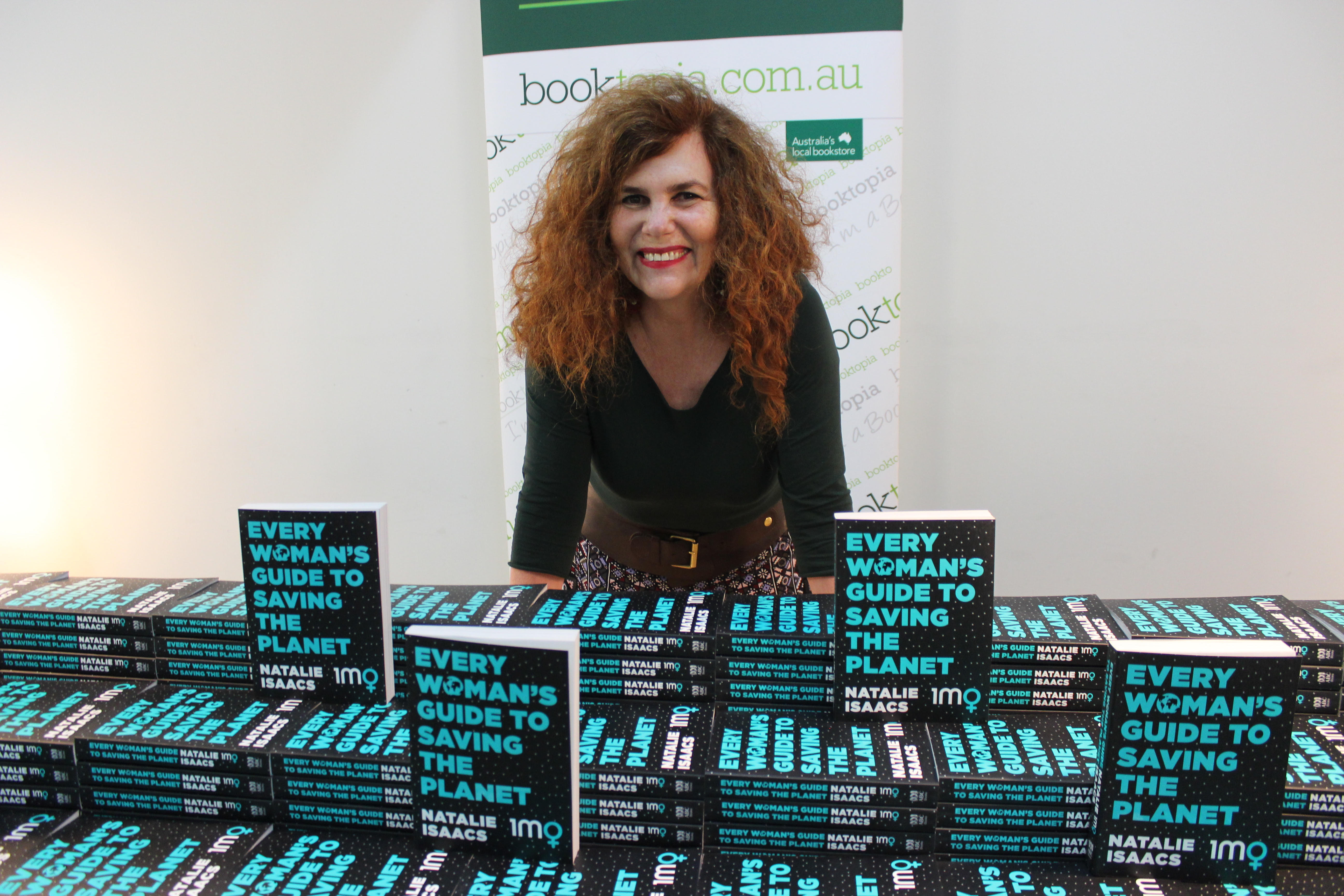With loads of tips, tricks, easy-to-understand info graphics and an inspiring can-do message, this book is for every woman who wants to make a difference.
Get your copy here!Upcycling clothes is a passion of mine, and I'm always looking for great ideas to give old clothing items a new look. It's a fun way to stop your clothes from sitting in the cupboard unworn, or even simply being thrown out and wasted.
By rebirthing clothes through upcycling, you could save an estimated CO2 Saving of 12kg per month (120kg per year), just by extending the life of your clothing.
One of the simplest things you can do is dye something a new colour. You wouldn't believe how much change this can make, and will have you wearing it again all the time.
However, there is just one problem with this. Most textile dyes that you buy in a shop are filled with a LOT of nasty chemicals, which after the dyeing process are most likely going to end up down your drain and washed into our waterways. This defeats the purpose of upcycling clothes to stop them from going to waste, if you will be polluting in the process.
But don't worry, because I have a great alternative for you! - use natural dyes which you can easily make at home. Before there were ready made dyes available for purchase, natural dyes where the only way to give fabrics and clothing beautiful colours.
I have experimented a lot with using natural dyes, and it's a really fun and rewarding process especially the end result. Also, it's a great way to use up scraps of food that may have been thrown out. In the winter months, things like onion skins and celery leaves can make great natural dyes, and in summer even the skin and seed of an avocado can be used. So, here's how you do it!
1. What can be dyed?
Any light-coloured (preferably white) natural fibers will take natural dyes. T-shirts or cotton dresses are some ideas, but you don't have to stop with clothing. Towels, sheets, even paper can be naturally dyed.
2. What Can Be Used as Natural Dyes?
Something extremely cool about natural dyes is that many of the ingredients could be found right in your own back yard! Roots, nuts and flowers are just a few common natural ways to get many colours. A visit to the grocery store and you have endless options at your fingertips.
Here are just a few materials you can use (and the colors you'll get with each).
Onion skins (yellow/orange) Eucalyptus (all parts, leaves and bark) shades of tan, deep rust red, yellow, green, orange and chocolate brown. Butternut squash husks (yellow/orange) Dandelion roots (brown) Coffee grounds/tea (brown) Bougainvillea (pink) Avocado from skin and seed (a light pink hue) Walnut hulls (brown) Strawberries/cherries (pink) Roses (pink) Lavender (pink) Red cabbage (blue/purple) Hyacinth flowers (blue) Beets (deep red) Any red leaf (reddish brown) Daylily blooms (red/purple) Artichokes (green) Red clover (gold) Bamboo (turkey red) Celery leaves (yellow)
3. How to Get Started Dyeing
PREPARE THE DYE BATH
Chop plant material into small pieces and place in a pot. Double the amount of water to plant material. Bring to a boil, then simmer for about an hour. Strain and return dye to the pot.
PREPARE THE FABRIC WITH A FIXATIVE
To get the fabric ready for the dye bath, you will have to soak the fabric in a colour fixative before the dye process. This will make the colour set in the fabric.
If you're using berries to dye your fabric, you have to use a salt fixative. Put 1/2 cup salt in 8 cups of water. Put your fabric in here and boil for one hour.
If you're using plants to dye your fabric, you have to use a vinegar fixative. Combine one part vinegar and four parts water, and boil the fabric in the mixture for one hour.
When your fabric is done, rinse it out under cold water.
DYE THE FABRIC
Place wet fabric in dye bath. Simmer together until desired color is obtained. For a stronger shade, allow material to soak in the dye overnight. Then, wash the fabric separately and put it to dry. The color of the fabric becomes lighter when its dry.
Notes
All dyed fabric should be laundered in cold water and separately.
It's best to use an old large pot as your dye vessel.
Wear rubber gloves to handle the fabric that has been dyed, the dye can stain your hands. Natural rubber gloves that are packaged in recyclable materials are a great planet-strong option.


